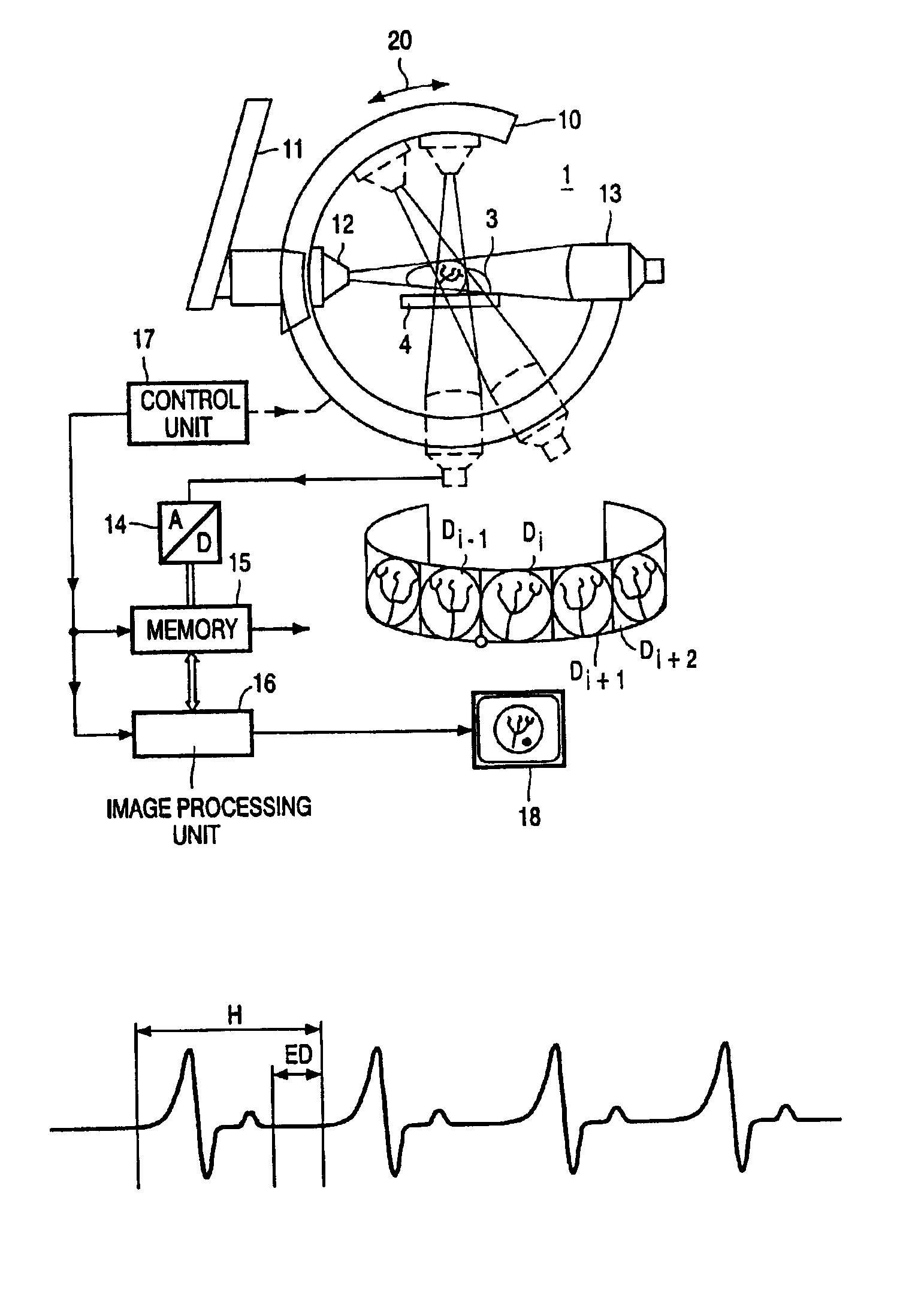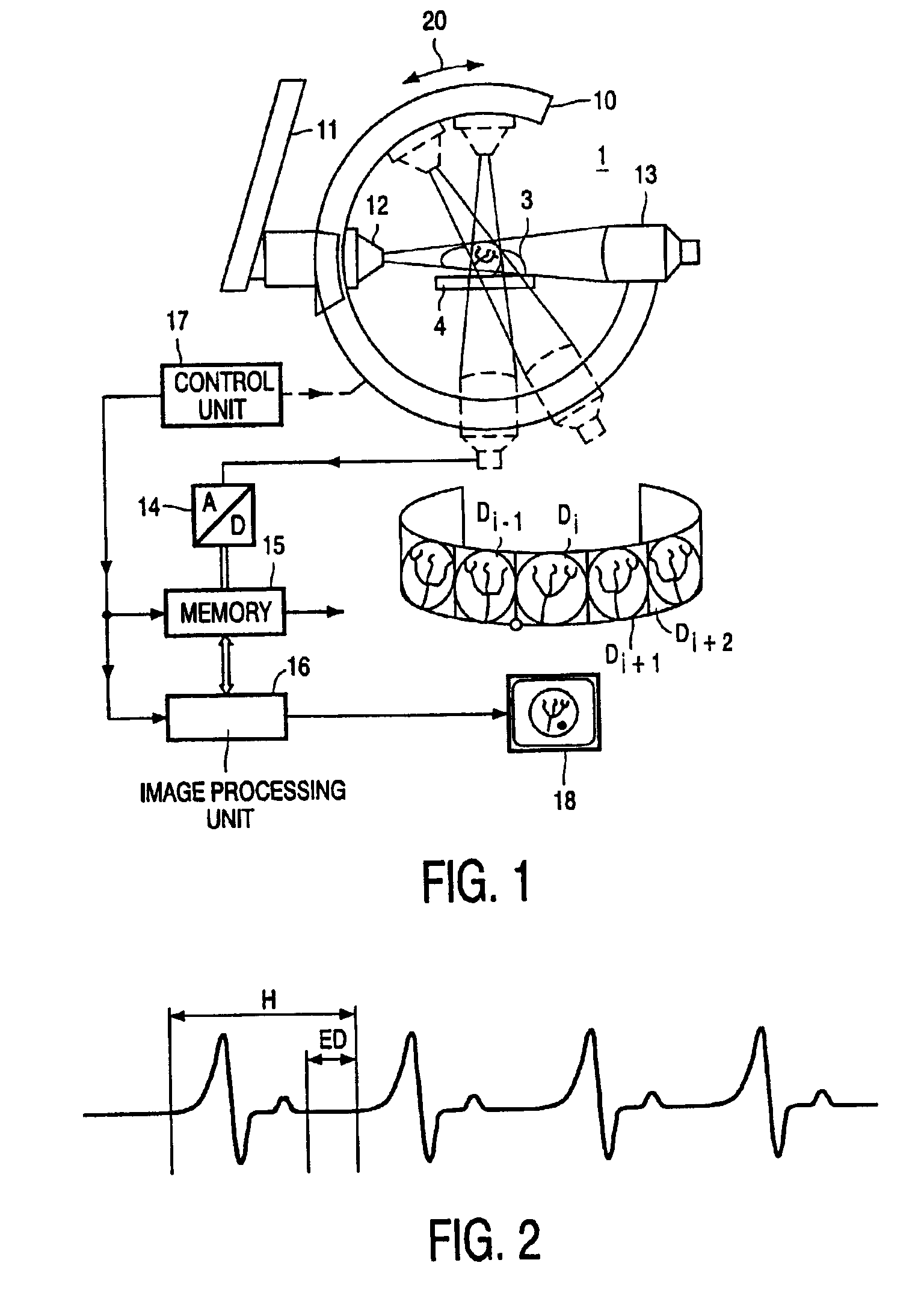X-ray imaging method and a 3D-rotational X-ray apparatus for applying this method
a x-ray and x-ray technology, applied in the field of x-ray imaging methods, can solve the problems of poor reconstructed image quality, achieve the effects of reducing noise, slowing down rotational scanning speed, and reducing the speed of x-ray source rotation
- Summary
- Abstract
- Description
- Claims
- Application Information
AI Technical Summary
Benefits of technology
Problems solved by technology
Method used
Image
Examples
Embodiment Construction
[0012]The imaging apparatus of FIG. 1 serves to form two-dimensional X-ray images of an object to be examined, particularly a periodically moving object such as the heart and the coronary vascular system of the heart of a patient, from which two-dimensional images via reconstruction a 3-dimensional volume of the object can be obtained.
[0013]The imaging apparatus 1 includes a circular C-arm 10 which is mounted on a (only partly shown) stand 11. The C-arm can be rotated over an angle of for example 180° around its center in the direction of the double arrow 20 by means of a motor drive (not shown in the figure). The C-arm 10 accommodates an X-ray source 12 and an X-ray image pick-up device 13, which are aligned relative to each other in such a manner that an X-ray image can be formed of a volume to be examined around said center. A plurality of X-ray images can thus be formed. This plurality of X-ray images shows the volume to be examined from different angular positions (some of whic...
PUM
 Login to View More
Login to View More Abstract
Description
Claims
Application Information
 Login to View More
Login to View More - R&D
- Intellectual Property
- Life Sciences
- Materials
- Tech Scout
- Unparalleled Data Quality
- Higher Quality Content
- 60% Fewer Hallucinations
Browse by: Latest US Patents, China's latest patents, Technical Efficacy Thesaurus, Application Domain, Technology Topic, Popular Technical Reports.
© 2025 PatSnap. All rights reserved.Legal|Privacy policy|Modern Slavery Act Transparency Statement|Sitemap|About US| Contact US: help@patsnap.com


